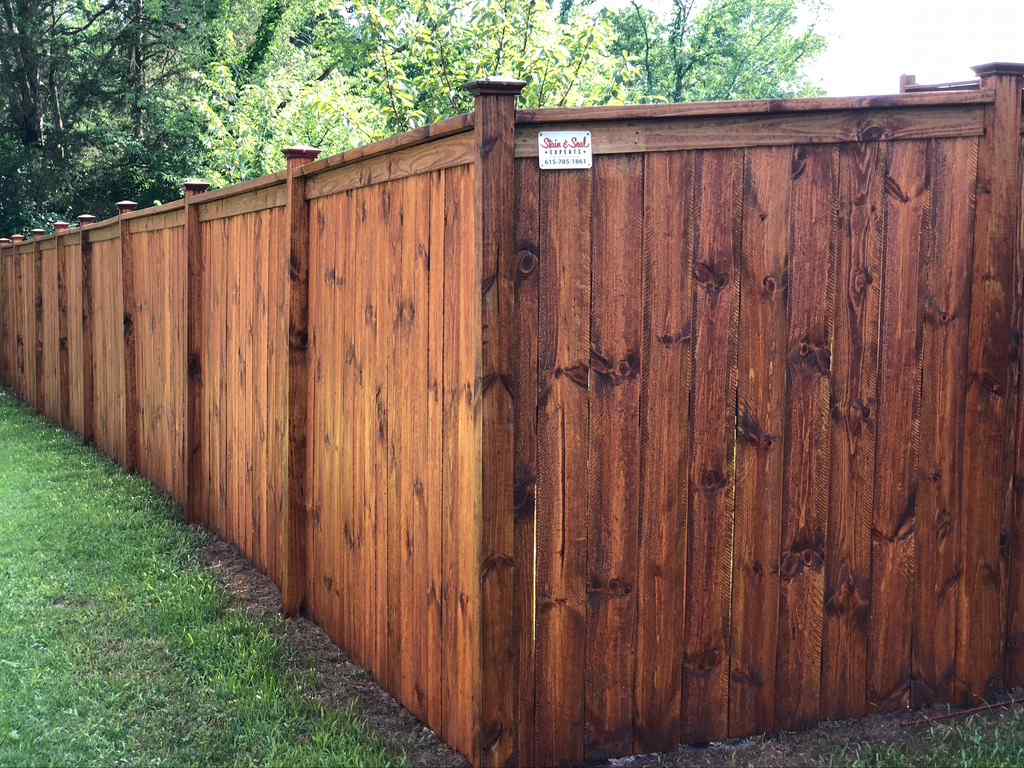Expert Fence Staining: Transform Your Fence with Long-term Results!
Expert Fence Staining: Transform Your Fence with Long-term Results!
Blog Article
The Ultimate Guide to Fence Discoloration: Tips and Techniques You Need to Know
In the realm of home upkeep, fencing staining commonly arises as a job that requires attention however is often forgotten. The procedure includes even more than simply slapping on a layer of tarnish; it requires accuracy, expertise, and the ideal techniques to make sure a lasting and visually appealing result. Whether you are a seasoned do it yourself enthusiast or a property owner seeking to improve the visual charm of your residential or commercial property, recognizing the subtleties of fencing discoloration can make a substantial distinction. Allow's check out the complexities of this apparently uncomplicated yet remarkably complicated task to unlock the secrets that can change your fencing from a mere boundary to a standout function of your outdoor room.
Benefits of Fencing Staining
What benefits does fencing discoloration offer to home owners seeking to enhance both the look and durability of their exterior structures? Fence discoloration provides various advantages that make it a popular option for homeowners looking to safeguard and enhance their fencings.
Additionally, fence staining helps to protect the timber from the aspects, such as rainfall, snow, and UV rays. This security not just avoids the wood from deteriorating and rotting but also extends its life-span, saving property owners cash on expensive repairs or replacements in the long run. Fence Staining. In addition, discoloring creates an obstacle against insects, such as termites and woodworker ants, which can trigger significant damages to unattended wood fences
Choosing the Right Spot

One more factor to consider is the degree of protection you desire for your fence. Clear stains supply marginal protection versus UV rays and wetness, while semi-transparent and strong discolorations supply enhanced defense. If your fencing is revealed to extreme weather, a solid tarnish could be the most effective alternative to ensure optimum durability.

Preparing Your Fence
Prior to applying the picked stain, complete prep work of the fence surface is crucial to guarantee ideal outcomes. Begin by cleaning the fence to eliminate dust, particles, and any old discolor or repaint. Make essential repair work to ensure the fence is structurally audio.
After cleansing and fixing, it is crucial to sand the fence to produce a smooth surface area for the tarnish to abide by. Use a medium-grit sandpaper to get rid of any rough patches or flaws. Clean down the fencing with a tack towel to get rid of any kind of remaining dirt particles.
Applying the Stain

When using the tarnish, function carefully section by area, beginning with the top and relocating downwards to prevent drips and guarantee also protection. Usage long, smooth strokes to apply the discolor towards the wood grain, enabling better infiltration and an extra professional surface. Take treatment to maintain a wet edge to stay clear of lap marks and overlap each stroke slightly to blend the discolor perfectly. When the initial coat is complete, permit it to completely dry according to the manufacturer's directions prior to choosing if a second coat is essential for included protection and longevity.
Keeping Your Stained Fencing
To ensure the longevity and visual appeal of your stained fencing, normal upkeep is important. The primary step in keeping your tarnished fencing is to regularly inspect it for any kind of indicators of wear, such as fading, peeling off, or fracturing. Resolving these concerns quickly can stop additional damage and extend the life of your tarnish. It is advised to cleanse your discolored fence a minimum of annually using a mild cleaning agent and water to get rid of dust, gunk, and mildew build-up. After cleansing, enable the fence to completely dry entirely prior to using any type of additional therapies or spots. Additionally, it is essential to monitor the sealer on your discolored fence and reapply it as required to safeguard the wood from wetness and UV damages. Keep plant life trimmed and away from the fencing to stop mold and mold growth. By adhering to these upkeep ideas, you can guarantee that your tarnished fence continues to be in top problem for many years ahead.
Final Thought
In verdict, fence staining uses many advantages such as protection against weathering and enhancing the aesthetic appeal of your building. By choosing the best discolor, appropriately preparing your fence, applying the discolor properly, and keeping it frequently, you can guarantee your fencing remains in top condition for several years ahead. Following these suggestions and methods will certainly aid you achieve a wonderfully stained fencing that will certainly stand the examination of time.
Report this page